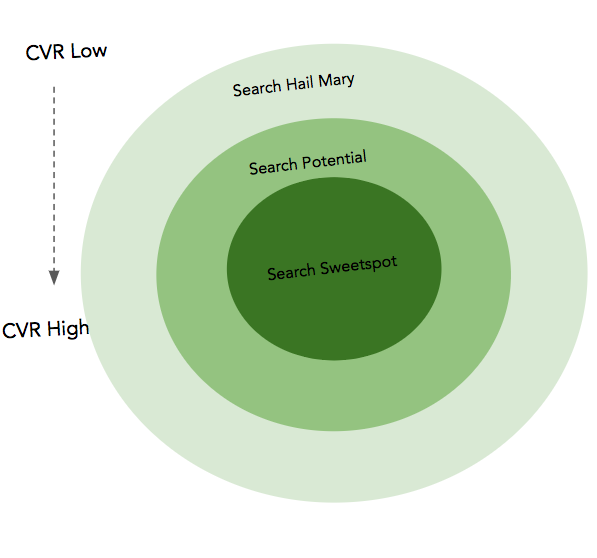What we cover in EP34?
We love unveiling new marketing strategies here on the GrowthTLDR :) In this weeks episode we talk to Edward Ford who is the Marketing Director at Supermetrics.
We talk about customer research and how marketers often undervalue the impact of it. We cover the essential customer insights to get and the importance of understanding your customer's buying trigger.
We also talk about the Walmart content strategy and how you can implement it to grow organic demand for your product. We get into why it's modeled on Walmarts growth strategy and how exactly you can leverage it for your marketing efforts.
Happy Growing!
1. Marketers Undervalue the Benefits of Customer Research
Talking to your customers is essential.
Now, that's probably not news to anyone reading this, but as a marketer, can you truthfully say it's something you invest in continually?
"Marketers probably don't spend enough time getting to know their customers. I think it's something marketers should be doing on an ongoing basis, whether that's customer research interviews, jumping on sales calls, studying your CRM, studying your best customers, talking with your customer-facing teams (sales, customer success, etc.) and getting a true understanding of who your customer is."
To make that shift you need to start thinking of customer research as a valuable use of time. Often it's looked at as something that gets in the way of doing real work.
"You need to view spending time doing customer research as extremely valuable, something that's just as important, if not more important than actually creating content, or putting together new automated workflows, or sending out an email campaign."
But what exactly do you want to learn from all of these customer calls? There are three key areas you want to dig into:
- You want to get a general idea of who your ideal customer is.
"You want to get an understanding of their background, challenges, responsibilities, in general, what their day looks like."
- You want to understand what your customers "buying trigger' is. What was the moment when they decided to look for a solution to their problem?
"You want to get an understanding of your customers trigger. What was the moment when someone actively or consciously acknowledges they need to start looking for a new solution? Finding that point will unlock a lot of marketing gold."
- You want to understand what impact did the product have on your customer's lives? What benefits did they see? What outcomes did they have?
"So, after purchasing and starting to use the product, what impact did that have on you? What were the benefits? What outcomes? How did it change the way you work?"
An example of a customer trigger:
For us at Supermetrics, something that I had noticed already very quickly is that people talk about the pain of having to manually pull information from all their different marketing platforms, exporting CSV files, uploading them into Google sheets or an Excel spreadsheet. Then if they want to use different datasets, then you can go back to each platform, pull up a new set of data for different timeframes and so forth.
It's a key pain point, one trigger that forces people to find somehow a solution that can automate that process so that you can potentially free your data and spend more time on reporting and analysis.
2. Walmart Content Marketing Strategy
At HubSpot, we've been big promoters of the topic & cluster model for content & search. It's a great playbook for running a search first content strategy — Edward as adopted a variation of this model based on his learnings from how Walmart outgrow their competitors.
Walmarts competitors like Kmart focused a lot of their efforts on creating new stores in large towns. They ignored the towns with small populations. However, Walmart focused a lot of its growth efforts on building both distribution centers and stores in those small towns.
"Walmart focused on the small towns everybody else was ignoring. They plotted out areas on a map with multiple small towns. They built distribution centers in the middle of those areas and opened stores in the small towns. Their rule was each store had to be a days drive from the distribution center."
They encircled their competition who had focused on the larger towns with distribution centers and stores. People would drive out from the bigger towns to the outskirts so they could avail of Walmarts prices. The competitors also had to deal with higher rents and bad logistics because of the distance between their different distribution centers.
Following the Walmart approach, Edward and his team focus their topic/cluster efforts on low volume keywords that have high search intent.
"We focus on 'small town keywords', so those with high intent, but with lower search volumes and usually lower competition. So you trade of search volume for intent, which I think is a trade-off most marketers would be willing to make. I would always take intent over volume."
How do I know the right keywords for my company to focus on?
One way to think about where you spend your time is how much you've saturated each part of this circle.

Most companies should start with their search sweet spot. These companies would be adopting Edwards 'Walmart Content Marketing Strategy" where the focus is on low volume keywords with high conversions.
As you begin to eat up all of your search volume in that circle, you'll need to expand your focus to the outer regions. You'll target higher volume keywords, that will often convert at a lower rate.
The podcast provides a more in-depth look at these topics, so if you enjoyed reading the above, please do give it a listen.
Happy Growing!
Subscribe Rate and Review
>> Stitcher
>> Google Play
>> Spotify
Follow Edward on Social Media
Follow us on Social Media
>> @Searchbrat
>> @SJTousley
Topics: content marketing, Podcast, Leader

